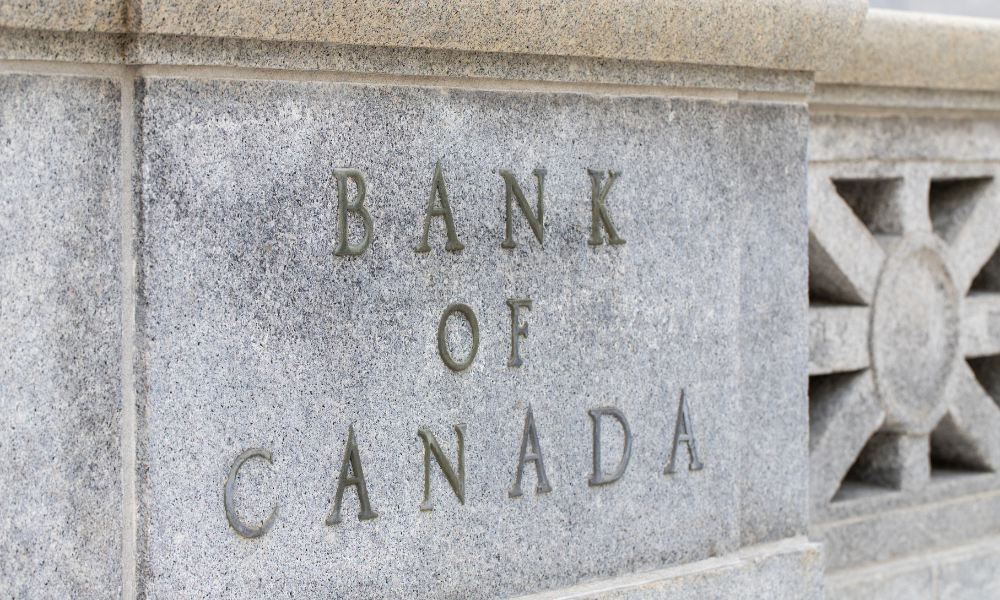Tariff threats and inflation risks led central bank to act cautiously despite strong 2025 outlook

The Bank of Canada’s governing council signalled they would likely have paused the interest rate easing cycle earlier this month if not for the substantial uncertainty around United States tariffs, according to BNN Bloomberg.
The summary of deliberations released Wednesday detailed how the council reached its March 12 decision to reduce the policy interest rate by 25 basis points to 2.75 percent.
According to the summary, high-level discussions revealed that governing council members were attempting to adjust monetary policy in the midst of a complex and evolving economic environment.
The decision followed a wave of US trade restrictions. The United States imposed blanket tariffs on Canadian imports just over a week prior and, on the same day as the rate cut, announced a fresh round targeting steel and aluminum.
Additional deadlines for new tariffs, including those on auto imports, were expected, with some measures scheduled to take effect on April 2.
The governing council noted that economic data pointed to stronger-than-expected Canadian performance heading into 2025. This would have allowed space for holding the policy rate after six straight reductions.
However, the uncertainty created by trade actions changed that calculus.
According to the deliberations, tariff threats had “sharply” eroded both business and consumer confidence.
Although inflation risks remained, new data on tariffs had “shifted the balance” for the Bank of Canada’s decision makers, suggesting inflation was less likely to fall far below the central bank’s two percent target.
The summary stated that “in the absence of tariff threats and elevated uncertainty, the decision would probably have been to maintain the policy interest rate at three percent.”
Some council members proposed that holding the rate “could still be appropriate” until further clarity emerged on the economic effects of the trade dispute.
Others argued that the threats and associated uncertainty had already weighed on forecasts enough to justify another cut.
The summary added that a “clearly weakening” outlook and stable inflation conditions pushed the council to favour a 25-basis-point reduction.
The cut was seen as a way to offer support to Canadians dealing with tariff-related instability: “This would provide some help to Canadians to manage the uncertainty related to tariffs.”
Bank of Canada Governor Tiff Macklem, in a March 20 speech, indicated a shift in the central bank’s strategy amid higher-than-usual uncertainty.
He said policymakers would now place more weight on setting a benchmark rate that accounts for the broad range of risks facing the economy, rather than simply forecasting the most likely economic path.
The central bank is scheduled to announce its next rate decision on April 16, alongside the release of its new monetary policy report.
Macklem cautioned that this report may not feature a standard economic projection for the coming quarters.
The summary said the governing council agreed that, given the fluid situation and the complexity of the economic shock, forward guidance on the policy rate path “would not be appropriate.”
It concluded that “governing council agreed to proceed carefully with further changes to monetary policy.”
Benjamin Reitzes, BMO managing director of Canadian rates and macro strategy, said in a Wednesday note to clients that the deliberations had a “hawkish” tone, favouring higher rates.
Reitzes observed that the Bank of Canada emphasised its intent not to let the initial price effects of tariffs develop into broader inflation.
He pointed to February’s inflation data — which rose to 2.6 percent following the expiration of Ottawa’s temporary tax break — and noted that this “has surely gotten the BoC’s attention and will only reinforce its hawkish bias.”
Reitzes added that while further rate cuts remain possible if the tariff situation worsens, the Bank of Canada’s focus on inflation control will likely limit how far rates can be reduced.



